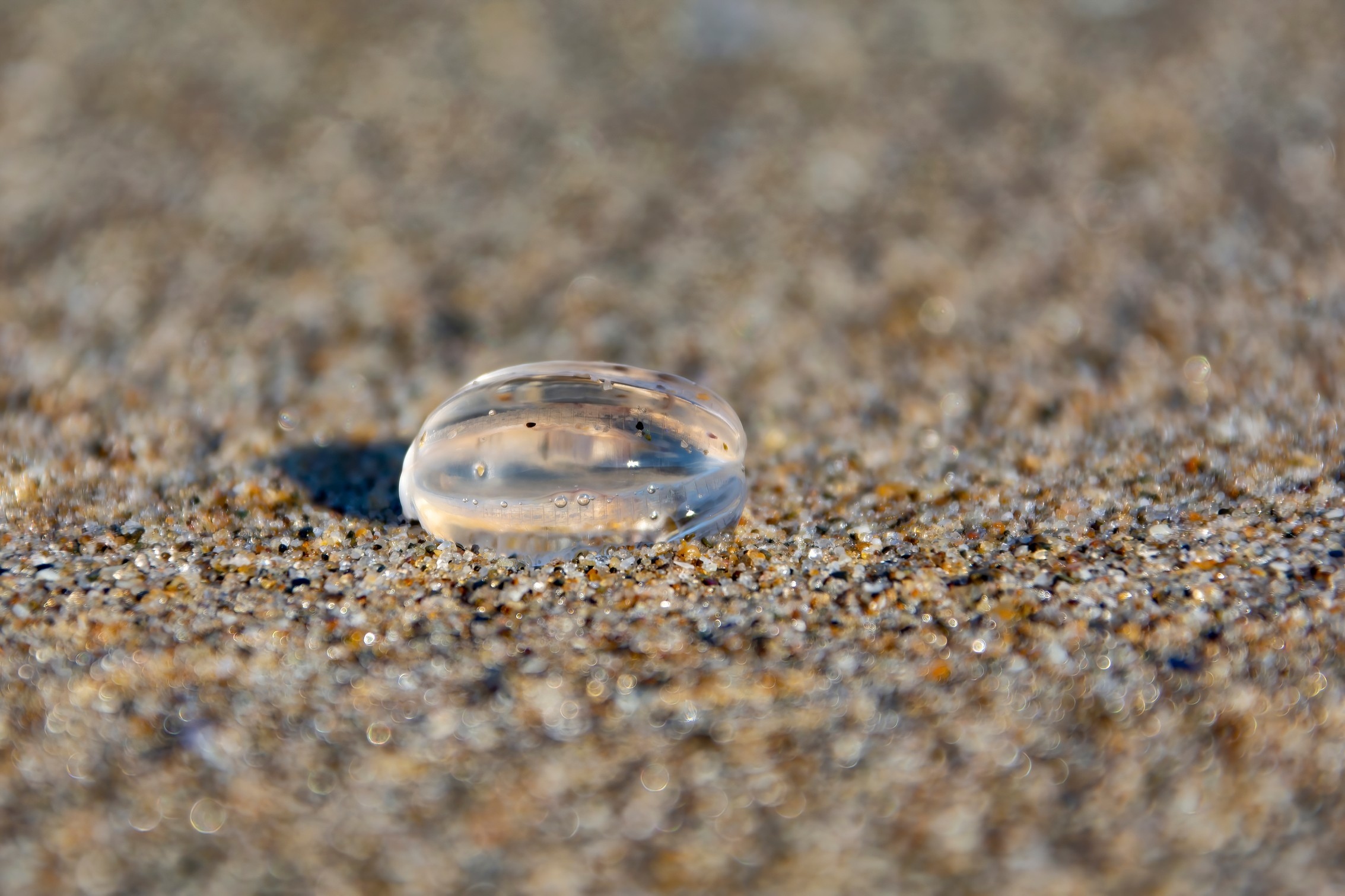TRANSLUCENT jelly ‘blobs’ washing up at Ouaisné and St Brelade’s Bay are a unique species of comb jellyfish known as a ‘sea gooseberry’, the head of Jersey Marine Conservation has confirmed.
Islanders took to social media earlier this week to raise questions about the ‘translucent eggs’, which some suspected were a type of jellyfish.
The JEP put those questions to the chair of Jersey Marine Conservation, Kevin McIlwee, who said that these ovoid comb jellyfish can grow up to 2.5cm in length.
Members of this species also have a pair of long tentacles – which can be up to 20 times the length of the body – that are used to catch prey and can be retracted into sheaths.
‘The sea gooseberry is normally found in open water,’ Mr McIlwee said.

‘But as predators of minute crustaceans and isopods, a large area of sand and shallow water is also an ideal food source for them.’
He added: ‘Once open-water species come into our gyratory tidal system, they can remain for many weeks. So, once jellyfish arrive, they thrive and populations become quite dense.
‘Thankfully, none that we encounter – on all but rare occasions – pose any serious danger to most people. The biggest one we get, the barrel jellyfish, has no sting or tentacles.’
Commenting on why there are more sea gooseberries on the shoreline this year, Mr McIlwee said: ‘This year there are fewer sea hares in contrast to the norm. Also, there may be a huge plankton bloom, then nothing for several years. What always fascinates me is that there is no annual consistency in what happens.’
Islanders keen to find out more about the species should search the internet for Pleurobrachia pileus.






